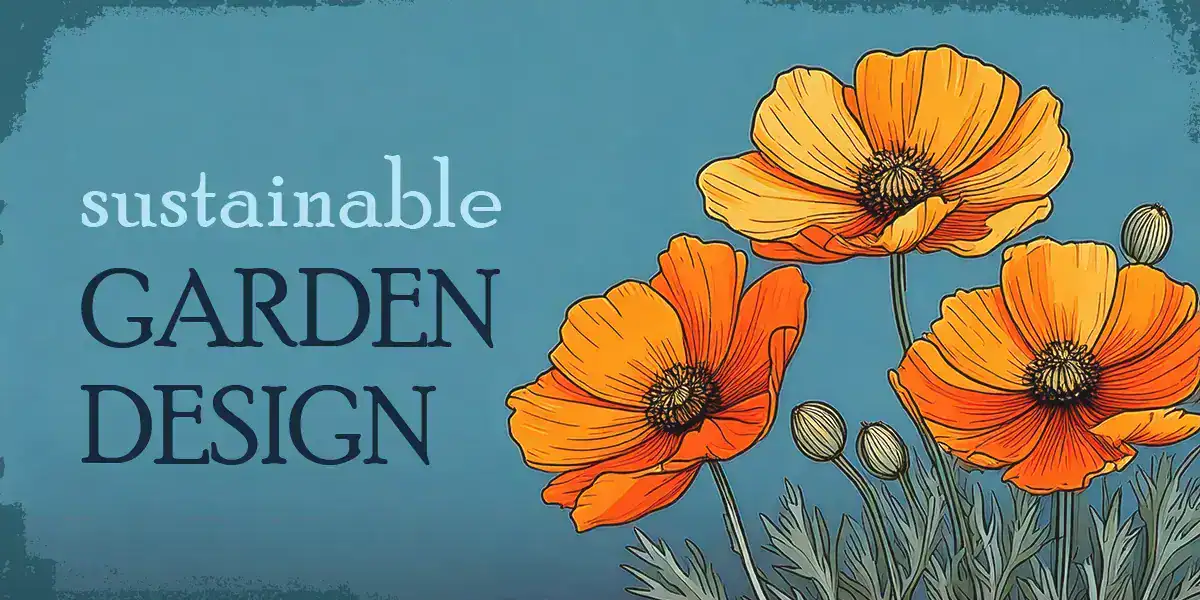Remember Earth Day?
Yes, it’s still a thing. Rising public concern over pollution, smog, and environmental degradation fueled the first Earth Day in 1970.
Sustainable gardening may seem like an Earth Day sequel, but many traditional cultures have practiced it for centuries. In the early 1900s, agriculturalists like Sir Albert Howard and J.I. Rodale advocated for mainstream organic farming, emphasizing soil health and natural practices.
Sustainable gardening minimizes waste, conserves water, and promotes biodiversity while ensuring the soil remains healthy and productive for future use.
It avoids harmful chemicals, prioritizes native or drought-resistant species, and supports local ecosystems to create a beautiful and resilient space.
Why Choose Sustainable Gardening?
Sustainable gardening works with nature, not against it, and includes:
- Water Efficiency: Many sustainable garden designs focus on drought-resistant plants and water conservation.
- Soil Health: Sustainable gardening improves soil quality, which is crucial for plant growth.
- Biodiversity Support: Sustainable gardening promotes biodiversity by providing a native habitat for pollinators and other wildlife.
- Environmental Stewardship: It reduces waste and supports local ecosystems.
So, where to begin? Your sustainable garden can start with something as small as a patch of native wildflowers to attract butterflies and bees.
Types of Sustainable Gardens
1. Native Plant Gardens
Native plants have naturally adapted to the local climate and soil.
Key Benefits
- Require less water, fertilizer, and maintenance.
- Provide food and shelter for local wildlife.
Top Plants
For Southern California, consider California poppies, manzanita, and sages.
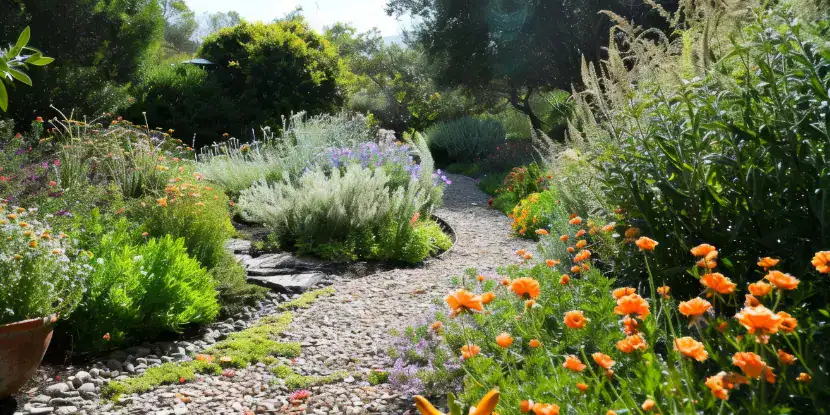
A California garden with native plants, including the state flower.
2. Permaculture Gardens
Designed around self-sustaining ecosystems that mimic nature.
Key Benefits
- Reduce waste by recycling resources within the garden.
- Plants, animals, and insects work together in a mutually beneficial cycle.
Pro Tip
Include composting areas and rainwater collection systems to close the loop on waste.
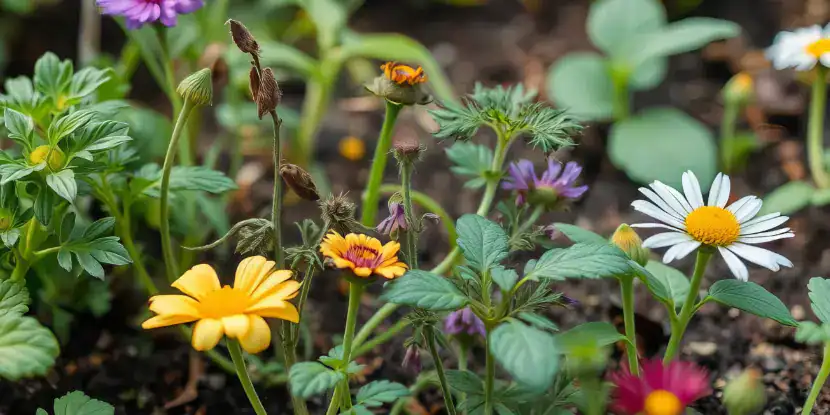
Permaculture gardens mimic nature and are often self-sustaining.
3. Pollinator Gardens
These attract and support pollinators like bees, butterflies, and hummingbirds.
Key Benefits
- Strengthen local ecosystems by boosting pollination.
- Combat the decline of pollinator species.
Top Plants
Milkweed for butterflies, lavender for bees, and trumpet vine for hummingbirds.
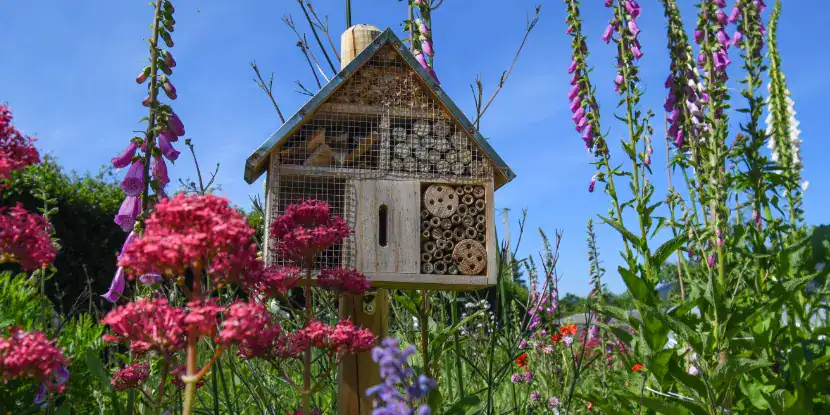
Pollinator gardens can include water features and insect shelters. Free pollen, nectar, and rent for bugs. Woo-hoo!
4. Rain Gardens
Rain gardens collect and absorb rainwater, and are often placed in lower areas of the yard.
Key Benefits
- Reduce stormwater runoff and erosion.
- Naturally filter water before it returns to the earth.
Pro Tip
Use native plants with deep root systems for better water absorption.
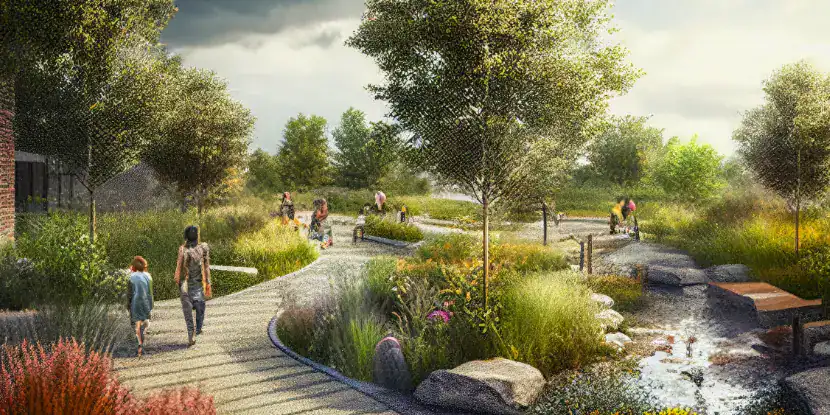
An illustration of a public park with rainwater collection features.
5. Edible Gardens
Edible gardens produce fresh vegetables, fruits, and herbs for your table.
Key Benefits
- Save money on groceries.
- Offer a rewarding farm-to-table experience.
Top Picks
Tomatoes, kale, basil, and citrus trees thrive in Southern California.

If gardening works up your appetite, nothing beats an edible garden! You can incorporate companion plants like marigolds to deter pests.
6. Xeriscape Gardens
Xeriscapes focus on drought-resistant plants and low-water landscaping.
Key Benefits
- Drastically reduce water usage.
- Often use decorative rocks and mulch for landscape flair.
Top Plants
Succulents, cacti, agave, palo verde, and yucca.
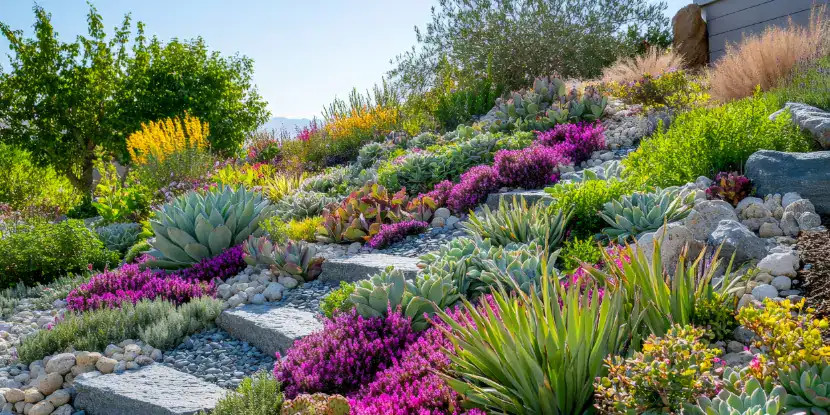
Xeriscapes don’t have to be dull! Many drought-tolerant plants bear brilliant colors and blooms year-round.
7. Organic Gardens
Organic gardens avoid synthetic fertilizers and pesticides.
Key Benefits
- Healthier, chemical-free produce.
- Long-term soil health.
Pro Tip
Use organic compost and natural pest deterrents like neem oil.
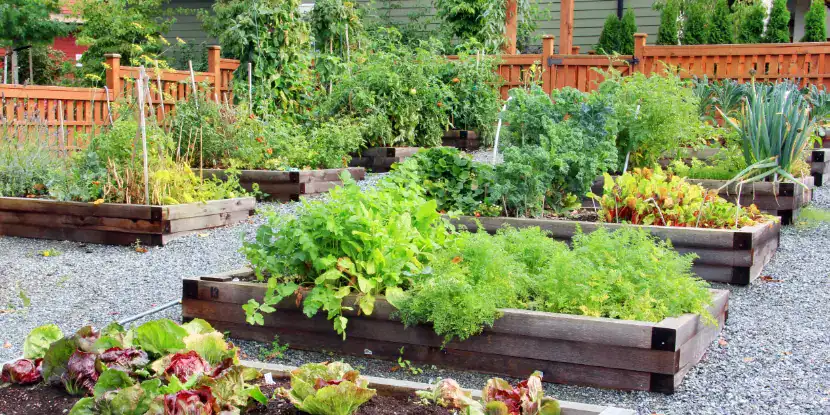
How about a dose of pesticide with those tomatoes? Or how about organically-grown produce instead?
8. Wildlife Gardens
These attract wildlife like birds, frogs, and insects by providing food and shelter.
Key Benefits
- Promote biodiversity.
- Create a lively, engaging space for nature-watching.
Include
Birdhouses, water features, and native shrubs.

Wildlife gardens promote native plants and often contain water features and areas for refuge. Do it for the bunnies!
9. Rooftop & Vertical Gardens
Designed for urban spaces or rooftops to maximize limited space.
Key Benefits
- Great for urban dwellers or people with small yards.
- Help regulate building temperatures.
Pro Tip
Invest in vertical planters or modular garden wall systems for easy setup.
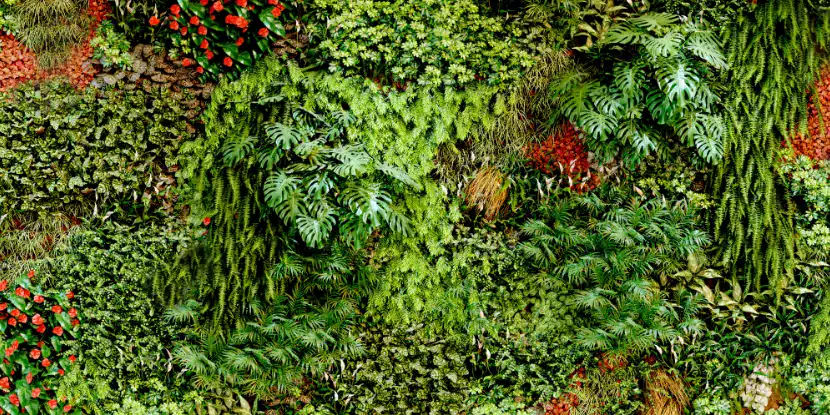
Vertical gardens grow up rather than out and take advantage of unused vertical space.
10. No-Till or Regenerative Gardens
These gardens avoid turning the soil, allowing natural organisms to flourish.
Key Benefits
- Reduced labor and soil disruption.
- Healthy soil ecosystems.
Getting Started
Cover soil with compost and mulch, then plant directly into it.
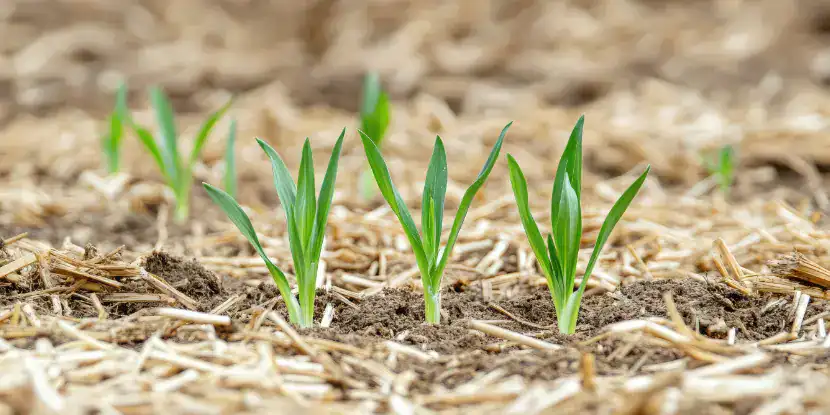
No-till gardens cause minimal disturbance to the soil and allow beneficial organisms to flourish.
11. Living Fences
Plants replace traditional fences for added privacy and aesthetics.
Best Plants
- Bamboo for fast-growing, dense coverage.
- Climbing vines like bougainvillea or trumpet vine.
- Hedge plants such as boxwood or privet.
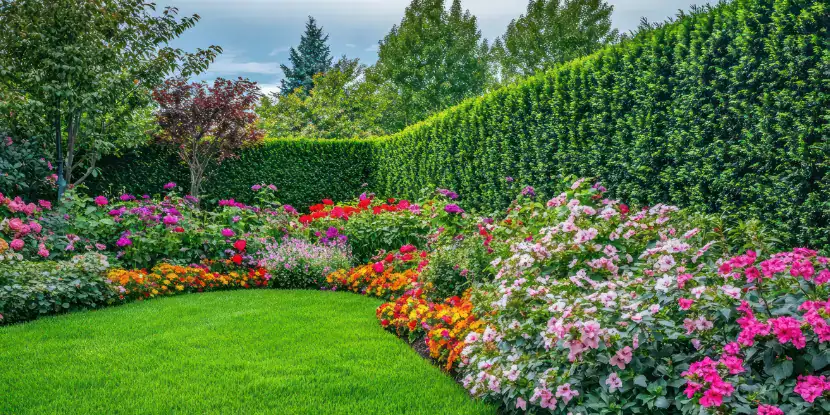
A lush “living fence” of hedges and border flowers. Or do you prefer cinder block?
12. Foodscapes
Foodscapes integrate edible plants into ornamental landscapes, blending aesthetics with food cultivation.
Key Benefits
- Uses small spaces for edible garden beds.
- Increases access to fresh, organic produce.
- Adds diversity to outdoor spaces.
Best Plants
- Dwarf fruit trees like lemon or fig.
- Salad greens and herbs.
- Berry bushes like blueberry or raspberry.
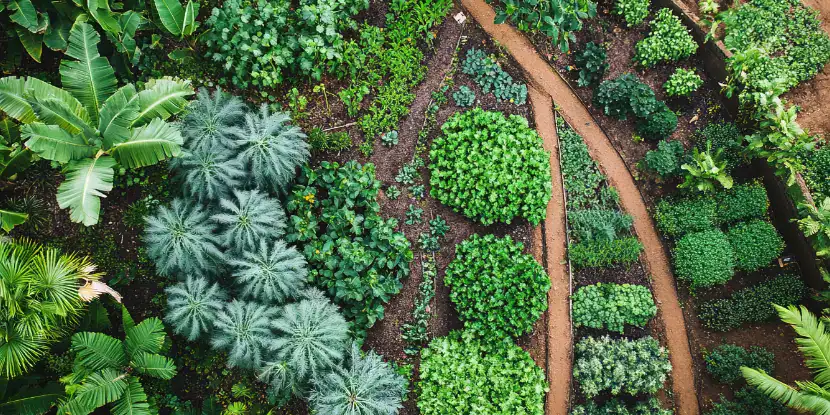
Foodscapes integrate decorative plants with edible plants, blending aesthetics with food cultivation.
13. Container Gardens
Everything grows in pots or planters. It’s a perfect method for small spaces, urban areas, and beginner gardeners.
Key Benefits
- Require less space, ideal for balconies or patios.
- Easier to maintain and control soil quality.
- Can be moved around for optimal sunlight exposure.
Best Plants
- Tomatoes, peppers, and other vegetables that thrive in containers.
- Succulents and cacti for low-maintenance options.
- Annual flowers like petunias or marigolds for seasonal color.
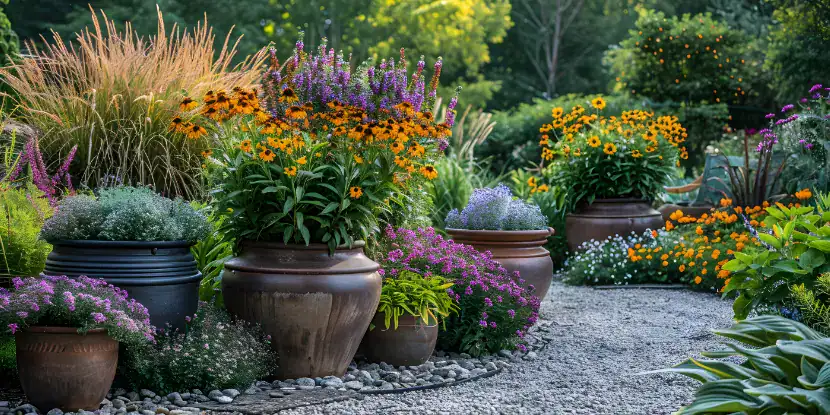
Container gardening works equally well for flowers, produce, and dwarf trees. The containers can be moved to protected areas or reorganized as you see fit.
14. Lived-In Gardens
These appear mature and natural, emphasizing biodiversity and a relaxed aesthetic over manicured designs.
Key Benefits
- Reduce water use and promote sustainability.
- Attract beneficial insects and pollinators.
- Require less maintenance.
Best Plants
- Native plants like sage or California poppies.
- Wildflowers, which can be seeded for a more natural look.
- Herbs or fruit trees for contrast and food benefits.
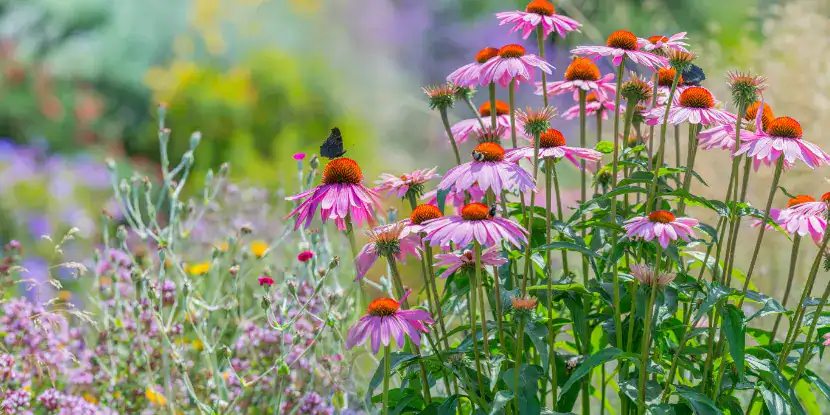
Lived-in gardens emphasize biodiversity and a relaxed aesthetic. They’re as comfortable as an old Birkenstock.
15. Decomposed Granite Landscapes + Succulents
These gardens have a modern and minimalist feel. They use decomposed granite as a ground cover and incorporate drought-tolerant succulents.
Key Benefits
- Low water usage and low maintenance.
- Versatile design options with various colors and textures of succulents.
- Resilient to harsh Southern California summers.
Best Plants
- Agave, Aloe Vera, or other desert succulents.
- Succulent varieties like Echeverias or Graptopetalums for color accents.
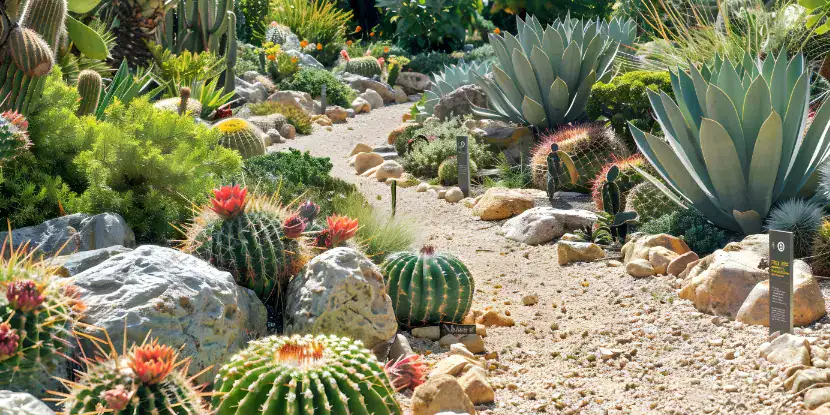
Decomposed granite dissipates heat much more readily than concrete or rocks.
Design Tips for Your Sustainable Garden
- Assess the sunlight requirements, shade, and space of your garden. This will influence the type of garden best suited for your yard.
- If you’re new to gardening, start with one or two beds before expanding.
- Apply eco-friendly mulch to retain soil moisture and keep weeds at bay.
- Install drip irrigation to deliver water exactly where your plants need it.
- Rotate your crops and plant according to the seasons for year-round growth.
FAQs: Sustainable Gardening
Q: What does it cost to set up a sustainable garden?
It depends on the size and type, but starting small can keep costs low. Over time, water savings and reduced maintenance will offset initial costs.
Q: Is sustainable gardening beginner-friendly?
Many types of sustainable gardens, such as native plant gardens, are low-maintenance and perfect for beginners.
Q: Do sustainable gardens require specialized tools?
Basic gardening tools are sufficient, though some setups (like rooftop gardens) may need specialized containers.
Q: How much water can I save with sustainable gardening?
With xeriscaping and proper irrigation, you can reduce water use by up to 50% or more.
Q: Can I have a sustainable garden in a small space?
Yes! Rooftop and vertical gardens are great options for maximizing small spaces.
Q: What’s the best way to keep pests away naturally?
Opt for integrated pest management (IPM) techniques like companion planting or natural repellents.
Q: How do I attract pollinators to my garden?
Plant a variety of native flowers and avoid pesticides.
Q: Can I combine types of sustainable gardens?
Many approaches, like permaculture and wildlife gardens, integrate seamlessly.

